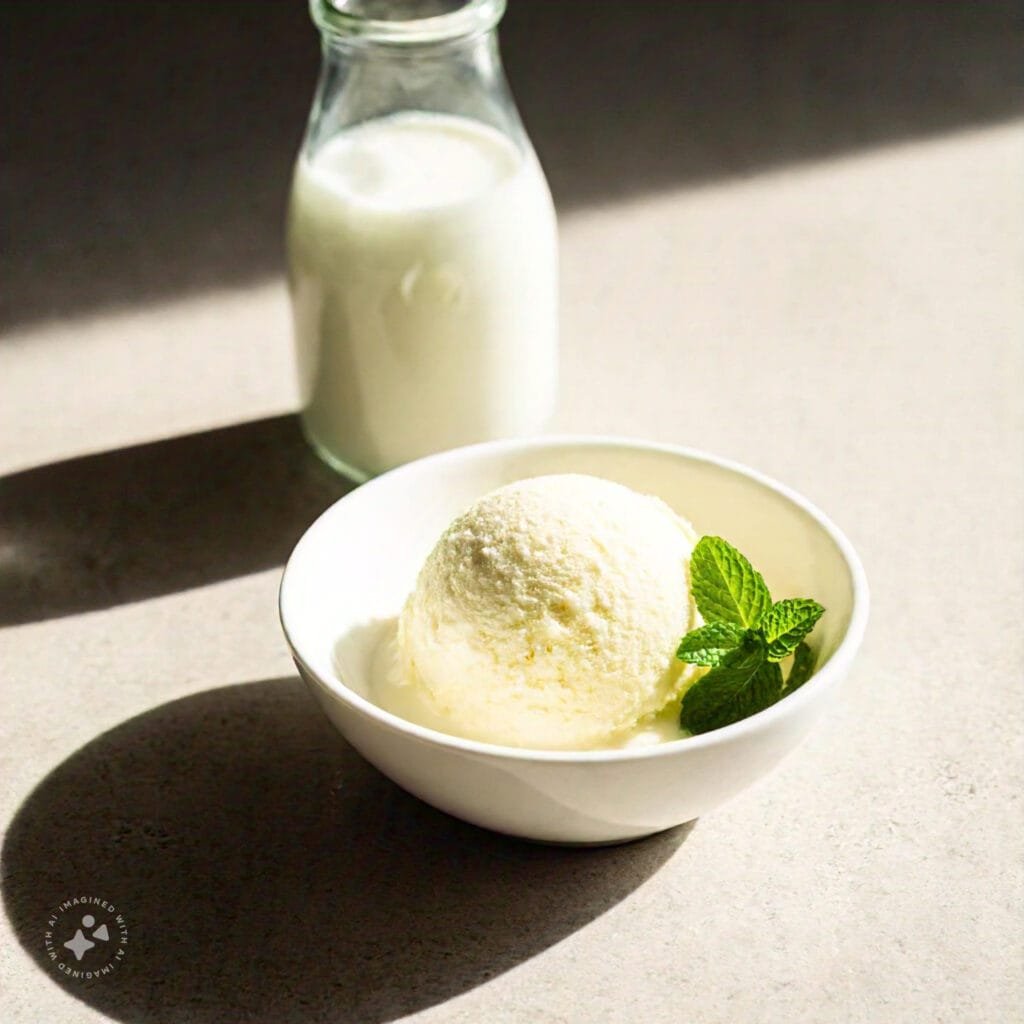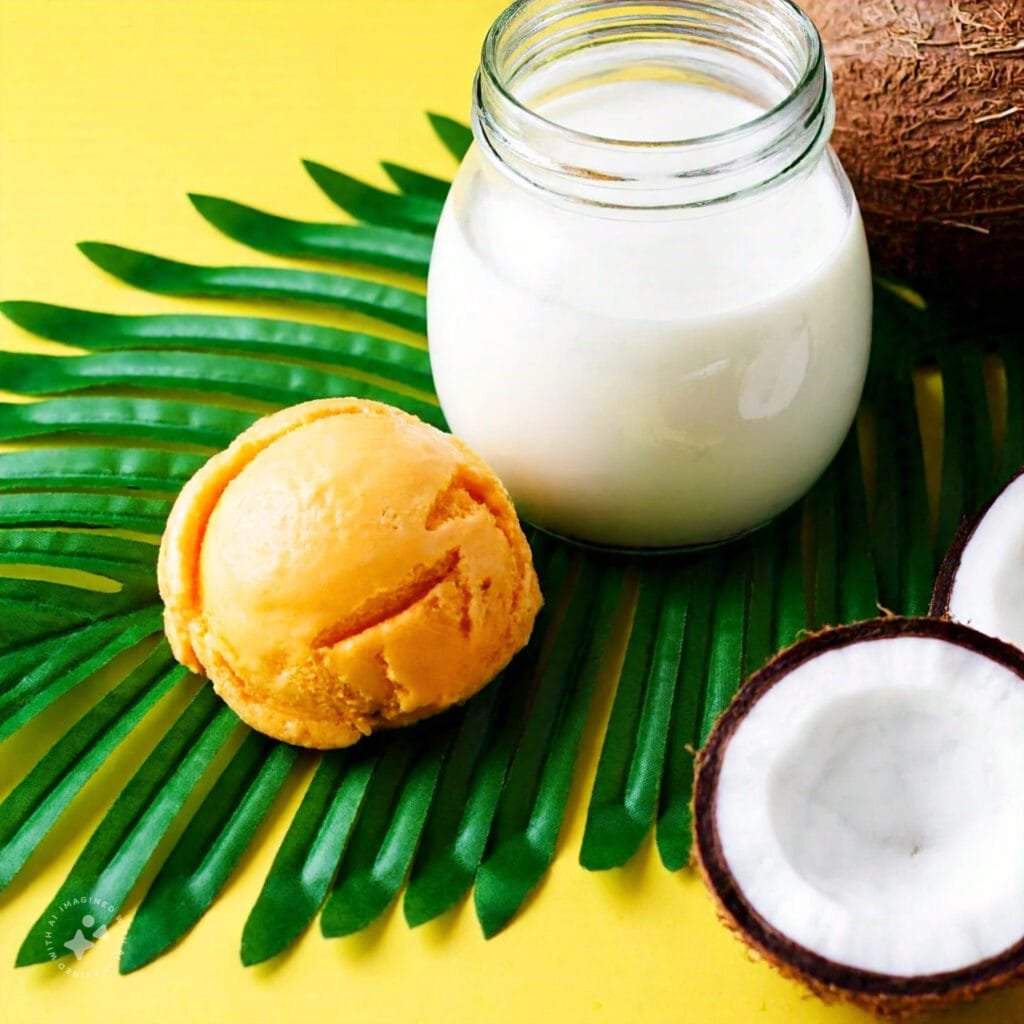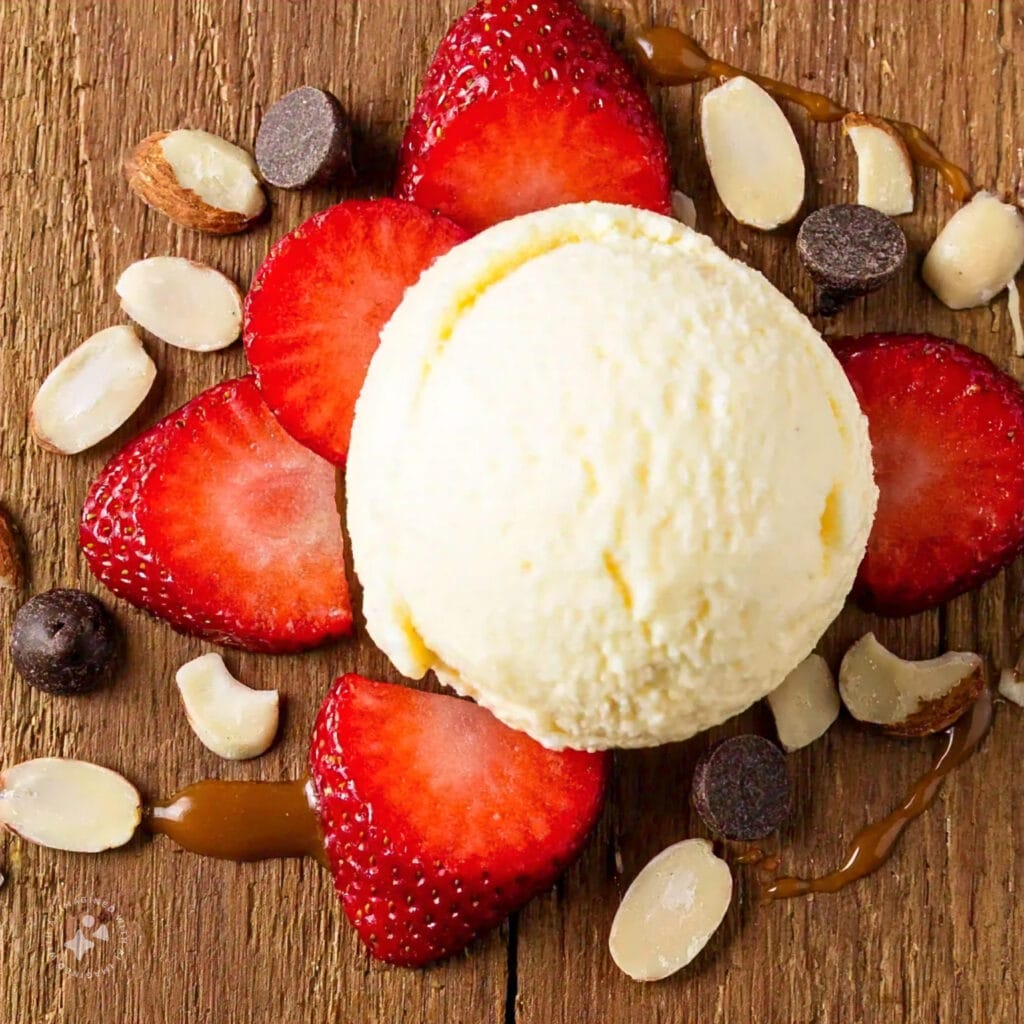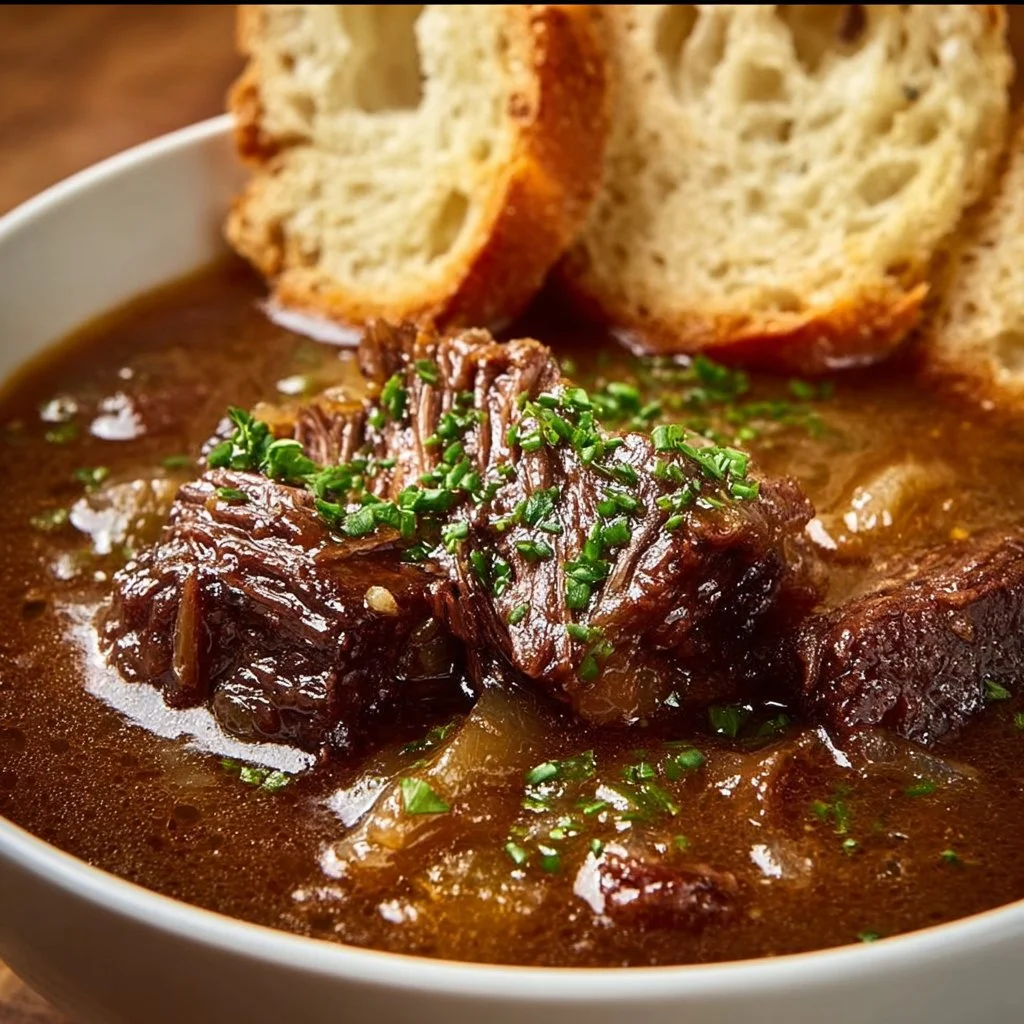Table of Contents
Introduction
Homemade ice cream is a delightful treat that brings joy to any occasion. Whether you’re a seasoned chef or trying out ice cream-making for the first time, choosing the right milk is crucial. The type of milk you use can dramatically affect the texture, taste, and creaminess of your final product. With so many options available, from whole milk to plant-based alternatives, finding the best one can be challenging. In this guide, we’ll dive into the factors that influence your choice of milk and explore which varieties work best for homemade ice cream.
Understanding Ice Cream Base
Homemade ice cream starts with a carefully crafted base, where milk is one of the most important ingredients. The base typically consists of milk, cream, sugar, and sometimes eggs or stabilizers. Each component contributes to the texture, flavor, and overall quality of the final product, but milk serves as the cornerstone. It provides the majority of the liquid content, determines the level of creaminess, and helps balance sweetness.
The Role of Milk in Ice Cream
Milk has several key functions in ice cream-making:
- Volume and Structure: Milk provides the bulk of the ice cream base. It acts as a liquid medium that holds sugar, cream, and flavorings together.
- Creaminess and Texture: The fat content in milk greatly affects the smoothness of the ice cream. Higher-fat milk options help reduce ice crystal formation, resulting in a creamier texture.
- Flavor Carrier: Milk fats enhance the perception of flavors, making them more pronounced and satisfying. This is particularly important for richly flavored ice creams like chocolate or caramel.
- Nutritional Contribution: Milk adds essential nutrients, including calcium, protein, and vitamins, to your homemade treat.
Components of Milk to Consider
When selecting milk for ice cream, it’s essential to understand its main components and how they affect the results:
- Milk Fat: Milk fat is crucial for creating a rich and creamy texture. Whole milk, for example, contains around 3.25% fat, while skim milk has negligible fat content. For a more indulgent texture, heavy cream or half-and-half can be added to increase the fat percentage.
- Milk Solids: Non-fat milk solids include proteins and lactose, which contribute to the body and sweetness of the ice cream. These elements help stabilize the mixture, ensuring a smooth and cohesive final product.
- Water Content: Water in milk freezes during the churning process, forming ice crystals. The lower the water content, the fewer ice crystals form, which leads to a smoother texture. Whole milk and cream, with higher fat and lower water content, are preferable for this reason.
Traditional Dairy vs. Plant-Based Alternatives
In recent years, plant-based milk alternatives have become popular in ice cream-making. While they don’t have the same fat structure as dairy milk, many of them can yield excellent results when paired with thickeners or stabilizers.
- Dairy Options: Whole milk, skim milk, and heavy cream are staples in traditional ice cream recipes. Each offers distinct results, with whole milk providing a balance of creaminess and lightness.
- Non-Dairy Choices: Options like almond, coconut, soy, and oat milk cater to dietary restrictions and preferences. These alternatives require adjustments to the recipe to achieve a creamy texture.
Customizing Your Ice Cream Base
To make ice cream that suits your preferences, consider experimenting with milk combinations. For example:
- Whole Milk + Heavy Cream: Ideal for achieving a classic, rich texture.
- Skim Milk + Cornstarch: A lighter option with added thickness.
- Coconut Milk: Offers natural sweetness and a tropical flavor.
Experimentation is key to discovering your ideal ice cream base, but understanding the role of milk and its components is the first step toward success.
Best Dairy Milk for Homemade Ice Cream
When it comes to traditional dairy-based ice cream, the type of milk you choose plays a significant role in the texture, flavor, and overall quality of your dessert. Different types of dairy milk bring unique qualities to the table, and the best choice depends on your desired results.

Whole Milk: The Gold Standard
Whole milk is often the go-to choice for homemade ice cream. It strikes the perfect balance between fat content and water, making it ideal for achieving a creamy texture. With approximately 3.25% fat, whole milk contributes to the smoothness of the ice cream while maintaining a lightness that’s not overly heavy.
- Advantages:
- Produces a balanced creamy texture without being overly rich.
- Easy to find and affordable.
- Works well in most ice cream recipes, including vanilla, fruit-based, and chocolate.
- Tips for Use:
- Pair whole milk with heavy cream for richer recipes, especially custard-based ice creams.
- Ensure your base is thoroughly chilled before churning to maximize creaminess.
Skim Milk: A Light Alternative
For those looking to reduce fat or calorie content, skim milk can be a viable option. However, its lower fat content (usually less than 0.5%) means the resulting ice cream will be lighter and less creamy, with a texture closer to sorbet.
- Advantages:
- A healthier choice for those watching their fat intake.
- Provides a lighter texture that may pair well with fruity or tart flavors.
- Challenges:
- Tends to form larger ice crystals due to higher water content.
- May lack the richness of traditional ice cream unless paired with thickeners or stabilizers.
Heavy Cream: For Indulgent Richness
Heavy cream contains about 36-40% fat, making it the richest dairy option available for ice cream. While it’s not used on its own (as this would result in overly dense ice cream), combining heavy cream with milk is a popular method to achieve luxurious results.
- Advantages:
- Adds richness and smoothness that’s unmatched by other dairy products.
- Helps prevent the formation of ice crystals, resulting in a silkier texture.
- Essential for premium or custard-based ice creams.
- Tips for Use:
- A common ratio is 2 parts heavy cream to 1 part whole milk for a perfect balance.
- Use in recipes with bold flavors like chocolate, peanut butter, or coffee for the ultimate indulgence.
Half-and-Half: A Middle Ground
Half-and-half, a mixture of equal parts milk and cream, offers a compromise between the lightness of milk and the richness of cream. With a fat content of about 10-18%, it produces a creamy texture that’s lighter than heavy cream-based recipes but more indulgent than those using whole milk alone.
- Advantages:
- Convenient and ready-to-use without additional blending.
- Ideal for recipes that require moderate creaminess.
- When to Use:
- Perfect for no-churn ice creams or quick recipes that don’t require eggs or custard.
Lactose-Free Dairy Milk
For individuals who are lactose-intolerant, lactose-free dairy milk is a practical alternative. These products maintain the same fat content as their regular counterparts but are processed to remove lactose.
- Advantages:
- Provides the creaminess of dairy without digestive discomfort.
- Available in whole, skim, and reduced-fat varieties.
- Tips for Use:
- Follow the same guidelines as regular milk based on its fat content.
- Combine with lactose-free cream for richer recipes.
Mixing Dairy Options for Optimal Results
Many ice cream makers prefer to combine different types of dairy to achieve the best balance of flavor and texture. For example:
- 2 Parts Whole Milk + 1 Part Heavy Cream: Ideal for classic, creamy ice cream.
- 1 Part Skim Milk + 1 Part Half-and-Half: Lighter with a touch of creaminess.
- Whole Milk + Lactose-Free Cream: Suitable for those with dietary restrictions.
Experimenting with these combinations allows you to tailor the richness and lightness of your homemade ice cream to your taste preferences.
Plant-Based Milks for Homemade Ice Cream
As dietary preferences evolve, plant-based milks have become a popular choice for making homemade ice cream. These alternatives cater to vegans, individuals with lactose intolerance, and those looking for unique flavor profiles. While they don’t replicate the properties of dairy milk perfectly, many plant-based milks yield creamy, delicious results with the right techniques and ingredients.
Almond Milk: A Nutty, Versatile Option
Almond milk is one of the most widely used non-dairy alternatives for ice cream. Made from ground almonds and water, it is low in fat and calories compared to traditional dairy milk.
- Advantages:
- Subtle nutty flavor complements chocolate, coffee, and vanilla bases.
- Readily available and affordable.
- Suitable for lighter, less calorie-dense ice creams.
- Challenges:
- Thin consistency may require thickeners (e.g., cornstarch, arrowroot powder) for creaminess.
- May lack richness unless paired with fats like coconut cream or nut butters.
Coconut Milk: Rich and Creamy

Coconut milk, made from the grated flesh of coconuts, is a favorite for plant-based ice creams due to its high-fat content. Full-fat coconut milk provides a richness similar to heavy cream, making it ideal for indulgent desserts.
- Advantages:
- Creamy texture with a natural sweetness.
- Works well for tropical flavors like mango, pineapple, and lime.
- Adds a hint of coconut flavor that enhances certain recipes.
- Tips for Best Results:
- Use full-fat coconut milk for the creamiest texture.
- Refrigerate the milk and scoop out the solidified cream for even richer ice cream.
Soy Milk: The Balanced Option
Soy milk is a versatile and neutral-tasting alternative that mimics the protein structure of dairy milk better than most plant-based options. Its balanced fat and protein content make it a solid base for ice cream.
- Advantages:
- Neutral flavor that works well with various add-ins.
- Richer texture compared to almond or rice milk.
- High in protein, adding body to the ice cream base.
- Challenges:
- May leave a slightly beany aftertaste in delicate flavors.
- Needs additional fat sources, such as vegetable oils or nut butters, for creamier results.
Oat Milk: A Creamy, Mild Alternative
Oat milk has a naturally creamy texture, making it an excellent choice for non-dairy ice cream. Its mild flavor pairs well with a wide range of ingredients, from berries to caramel.
- Advantages:
- Creamier than almond or rice milk due to natural starches.
- Sweet, mild flavor complements most recipes.
- Often fortified with vitamins and minerals, adding nutritional value.
- Tips for Use:
- Opt for unsweetened varieties to control the sweetness of your ice cream.
- Blend with coconut cream for extra richness.
Rice Milk: Light and Sweet
Rice milk is one of the thinnest plant-based options, with a naturally sweet flavor. While it’s not as creamy as other alternatives, it can work well in sorbet-like recipes or lighter ice creams.
- Advantages:
- Naturally sweet, reducing the need for added sugar.
- Works well for fruit-based or sorbet-style ice creams.
- Challenges:
- Thin consistency may require thickening agents.
- Minimal fat content means a lack of creaminess compared to other options.
Enhancing Plant-Based Ice Cream
To achieve creaminess and richness comparable to dairy-based ice creams, consider the following techniques when using plant-based milks:
- Add Fats: Incorporate coconut cream, nut butters, or vegetable oils to mimic the fat content of dairy.
- Use Thickeners: Ingredients like agar-agar, cornstarch, or guar gum can improve texture.
- Freeze with Care: Churn the base thoroughly and avoid over-freezing, which can cause ice crystals to form.
- Blend Milks: Combine different plant-based milks for the best balance of flavor and creaminess (e.g., almond and coconut milk).
By experimenting with these strategies, plant-based milks can deliver ice cream that is just as creamy and delicious as their dairy counterparts.
Milk Fat and Its Role in Homemade Ice Cream
Milk fat is one of the most critical factors in determining the quality of homemade ice cream. It directly impacts texture, flavor, and the overall sensory experience of your dessert. Understanding the role of milk fat allows you to make informed decisions about which type of milk to use and how to achieve your desired results.
How Milk Fat Affects Texture
- Creaminess:
Milk fat contributes to the smooth and creamy texture that defines high-quality ice cream. It helps coat the tongue, creating a luscious mouthfeel that lower-fat options often lack. - Ice Crystal Formation:
During the freezing process, water in the ice cream base turns into ice crystals. Milk fat disrupts this process, limiting the size of the crystals and producing a smoother texture. Recipes with lower-fat milks may form larger ice crystals, resulting in a grainier consistency. - Stabilization:
Fat acts as a stabilizer in the ice cream base. It helps bind water and air, maintaining the structure and preventing the mixture from becoming overly icy or hard after freezing.
Enhancing Flavor with Milk Fat
Milk fat is also a powerful flavor enhancer. It:
- Carries and Amplifies Flavors: Fat is an excellent carrier for both natural and added flavors, making them more pronounced. For example, vanilla or chocolate ice creams made with higher-fat milk are often more flavorful and indulgent.
- Balances Sweetness: The richness of milk fat offsets sweetness, providing a more balanced flavor profile.
Using milk with a higher fat content allows the flavors of your ice cream to shine, making them more vibrant and satisfying.
Comparing Milk Fat Levels
| Type of Milk | Fat Content | Impact on Ice Cream |
|---|---|---|
| Skim Milk | <0.5% | Light, icy texture; less creamy. |
| Low-Fat Milk | 1-2% | Slightly creamier but still lighter than whole milk. |
| Whole Milk | ~3.25% | Balanced creaminess, good for most recipes. |
| Half-and-Half | 10-18% | Richer and creamier, great for moderate indulgence. |
| Heavy Cream | 36-40% | Luxuriously rich; often combined with milk. |
Choosing the right milk fat level depends on the type of ice cream you want to create. For traditional, creamy ice creams, a combination of whole milk and heavy cream is ideal. For lighter or more calorie-conscious recipes, low-fat or skim milk may suffice, but additional stabilizers or thickeners may be needed.
Customizing Fat Content
One of the benefits of making ice cream at home is the ability to customize the fat content to suit your preferences. Consider these methods:
- Blend Milk and Cream: Adjust the ratio of milk to cream to control the richness. For example, use 2 parts whole milk to 1 part heavy cream for moderate creaminess.
- Add Plant-Based Fats: For dairy-free options, incorporate coconut cream, cashew butter, or avocado for a creamy texture.
- Emulsify with Eggs: In custard-based recipes, egg yolks add richness and act as a natural emulsifier, enhancing creaminess even in low-fat recipes.
Balancing Fat with Other Ingredients
While milk fat is essential for texture and flavor, it must be balanced with other ingredients in the recipe. Too much fat can make ice cream overly dense and buttery, while too little can lead to iciness. Pairing milk fat with the right proportion of sugar, stabilizers, and mix-ins ensures optimal results.
For example:
- High-fat ice creams pair well with bold flavors like chocolate or coffee, as the richness enhances their depth.
- Lower-fat ice creams benefit from fruity or tart flavors, which add brightness and complement the lighter texture.
By understanding the role of milk fat in homemade ice cream, you can adjust your ingredients to create the perfect texture and flavor for your dessert.
Balancing Flavor Profiles in Homemade Ice Cream
Flavor is just as important as texture when crafting homemade ice cream. The type of milk you choose can influence how flavors are perceived, while balancing sweetness, richness, and complementary ingredients ensures a satisfying dessert. Here’s how to fine-tune the flavor profile of your ice cream.

Milk Types and Their Flavor Contributions
The milk you use can significantly impact the taste of your ice cream:
- Whole Milk: Neutral and versatile, whole milk allows primary flavors like vanilla, fruit, or chocolate to shine without overpowering them.
- Heavy Cream: Its richness amplifies bold flavors, making it ideal for indulgent options like dark chocolate or salted caramel.
- Plant-Based Milks: Each alternative brings a unique flavor note. For example:
- Almond milk adds a subtle nuttiness.
- Coconut milk contributes sweetness with a tropical hint.
- Oat milk has a mild, grainy sweetness that pairs well with berries and spices.
Pairing Milk Types with Ingredients
Pairing the right milk with your flavorings can elevate your ice cream:
- Vanilla Ice Cream:
- Works best with whole milk or a milk-cream blend for balance.
- Coconut milk can add an exotic twist.
- Chocolate Ice Cream:
- Heavy cream enhances the richness of dark or milk chocolate.
- Soy milk or almond milk pairs well with cocoa powder for a lighter version.
- Fruit-Based Ice Cream:
- Low-fat or skim milk keeps fruit flavors vibrant and fresh.
- Oat milk enhances natural sweetness without overshadowing the fruit.
- Spiced Ice Cream (e.g., Chai, Cinnamon):
- Creamy bases like heavy cream or coconut milk carry warm spices beautifully.
- Almond milk adds depth without overwhelming subtler spices.
Adjusting Sweetness
Sweetness is essential to ice cream, but it must be carefully calibrated:
- Balance with Fat: Higher-fat bases can handle more sugar without tasting cloyingly sweet, as the richness offsets sweetness.
- Natural Sweetness: Some plant-based milks like coconut or oat milk bring natural sugars to the recipe, allowing you to reduce added sugar.
- Flavor Enhancers: Small amounts of salt or vanilla extract can balance excessive sweetness and make flavors more pronounced.
Adding Depth with Mix-Ins
Mix-ins like nuts, chocolate chips, or fruit can enhance the texture and flavor of your ice cream. Pair these with your milk choice for harmonious results:
- Nuts and Nut Butters: Almond or soy milk complements nutty mix-ins, while heavy cream adds indulgence.
- Chocolate Chips or Swirls: Pair best with richer bases like whole milk or cream.
- Fresh or Dried Fruits: Work well with lighter milks, such as skim or oat milk, to maintain a refreshing balance.
Enhancing Flavor with Aging
Allowing the ice cream base to rest (or age) before churning can improve its flavor. The aging process gives the ingredients time to meld, creating a more cohesive and robust profile.
- How to Age: Refrigerate the base for 4-24 hours before churning.
- Benefits: Enhanced creaminess, smoother texture, and deeper flavor.
Experimenting with Combinations
Don’t hesitate to experiment with different milk and flavor combinations to create a signature ice cream:
- Blend almond milk with a touch of coconut cream for a nutty tropical profile.
- Use whole milk and heavy cream with espresso and cocoa powder for a mocha-inspired treat.
- Try oat milk with cinnamon and brown sugar for a comforting, spiced dessert.
Balancing flavor profiles in ice cream is an art that involves pairing the right milk with complementary ingredients, adjusting sweetness levels, and incorporating mix-ins thoughtfully. With these tips, you can create ice cream that’s perfectly tailored to your taste preferences.
FAQs
Choosing the right milk for homemade ice cream often raises a variety of questions. Here are some of the most common queries and their detailed answers to help you make the best decisions for your ice cream-making endeavors.
What Kind of Milk Makes the Creamiest Ice Cream? For the creamiest texture, a combination of whole milk and heavy cream is ideal. Heavy cream adds richness, while whole milk provides a balanced liquid base. If you prefer plant-based options, full-fat coconut milk is the closest in creaminess to traditional dairy.
Can I Use Skim Milk for Ice Cream? Yes, you can use skim milk, but the resulting ice cream will be lighter and less creamy. Skim milk has a higher water content and lacks the fat that contributes to a smooth texture. To counteract this, consider adding:
- Stabilizers like cornstarch or gelatin.
- A small amount of heavy cream or plant-based fat for added richness.
Is Plant-Based Milk a Good Choice for Ice Cream? Plant-based milks are an excellent alternative for those with dietary restrictions or preferences. The best options include:
- Coconut Milk: Full-fat varieties produce a rich and creamy texture.
- Almond Milk: Great for lighter, nutty-flavored ice creams.
- Oat Milk: Naturally creamy and pairs well with sweet flavors.
Each plant-based milk may require recipe adjustments, such as adding thickeners or combining with coconut cream for optimal results.
Can I Mix Different Types of Milk? Absolutely! Combining milk types allows you to customize the texture and flavor of your ice cream. Some popular combinations include:
- Whole Milk + Heavy Cream: For classic, creamy ice cream.
- Skim Milk + Half-and-Half: A lighter option with moderate creaminess.
- Almond Milk + Coconut Cream: A plant-based blend for rich, dairy-free ice cream.
How Can I Improve the Creaminess of Low-Fat Milk Ice Cream? To enhance the creaminess of ice cream made with low-fat or skim milk, try the following:
- Add stabilizers such as cornstarch, guar gum, or egg yolks.
- Use a small amount of butter or plant-based fats to mimic milk fat.
- Chill the base thoroughly to prevent large ice crystals from forming during churning.
Are There Milks I Should Avoid for Ice Cream? Avoid using milks that are too watery, as they may produce icy and grainy results. For example:
- Rice Milk: Thin and low in fat, resulting in poor texture.
- Unsweetened Low-Fat Almond Milk: May lack the richness needed for creaminess unless paired with stabilizers or additional fats.
How Can I Adjust Recipes for Lactose-Free Milk? Lactose-free milk can be used as a direct substitute for regular milk in most ice cream recipes. To achieve similar results:
- Pair lactose-free whole milk with lactose-free cream for creamy texture.
- Add natural sweeteners like honey or maple syrup to enhance flavor, as lactose-free milk is often slightly sweeter.
Does the Milk’s Temperature Matter When Making Ice Cream? Yes! The temperature of your milk and base affects the final texture:
- Always chill your base thoroughly before churning. A cold base freezes faster, creating smaller ice crystals and a smoother texture.
- Avoid adding hot ingredients directly to the ice cream machine, as this can raise the temperature and lead to uneven freezing.
What’s the Healthiest Milk Option for Ice Cream? The healthiest option depends on your dietary goals:
- For Lower Calories: Skim milk or almond milk.
- For Balanced Nutrition: Oat milk provides fiber and vitamins.
- For High Protein: Soy milk or whole milk.
Learn more about the secret ingredient for the perfect ice cream in this article.
Conclusion
Choosing the right kind of milk is the foundation of crafting delicious, creamy homemade ice cream. The type of milk you select—whether it’s whole milk, heavy cream, or a plant-based alternative—determines the texture, flavor, and richness of your dessert. Each option has unique properties: whole milk offers balance, heavy cream brings indulgent richness, and plant-based milks provide versatility for dietary needs.
To achieve the best results:
- Match Milk to Your Recipe: Pair richer milks with bold flavors and lighter options with fruity or refreshing recipes.
- Experiment with Combinations: Blending different types of milk allows you to customize the fat content and flavor.
- Pay Attention to Technique: Proper chilling, churning, and freezing are as important as the ingredients themselves.
Whether you’re a traditionalist who loves creamy vanilla or a creative chef experimenting with exotic flavors, understanding the role of milk empowers you to create ice cream that’s perfect for your taste and preferences. With these insights, your homemade ice cream will always be a crowd-pleasing treat.
You might also like:





